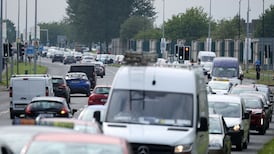The primary energy intensity (energy used per unit of GDP generated) of the Irish economy fell by 42 per cent between 1990 and 2007, marking a long-term trend of improved energy efficiency, Sustainable Energy Ireland (SEI) said today.
According to the SEI, in 1990 the Irish economy required 150 kilograms of oil equivalent (kgoe) to produce €1000 of GDP, however, by 2007 this had fallen to just 90 kgoe.
In a report published today,
Energy in Ireland 1990 – 2007, SEI said since 2005, energy-related CO2 emissions have reduced by 1.4 per cent (excluding international aviation), while the economy grew by 12 per cent during the same period.
And it reveals that all sections of the economy with the exception of transport, which grew by 5.1 per cent, experienced reductions in energy-related CO2 emissions last year.
However, the SEI also warns that Ireland's import dependency, while falling from 91 per cent in 2006, still remained high at 89 per cent in 2007.
Brian Motherway, head of Industry at SEI said the report reveals "a long term trend of improving energy efficiency in the Irish economy."
"This gain was made over a period of sustained strong economic growth however, while the analysis of 1990 to 2007 charts a period of considerable change, the coming years of lower economic growth and increasing targets will require much greater and more rapid change, in how we source and use energy," he warned.
The report also showed that the since Government introduced emission-linked VRT and road tax rates in July of this year, lower emission cars accounted for 84 per cent of total vehicle sales, compared with 41 per cent in the same period of 2007.









